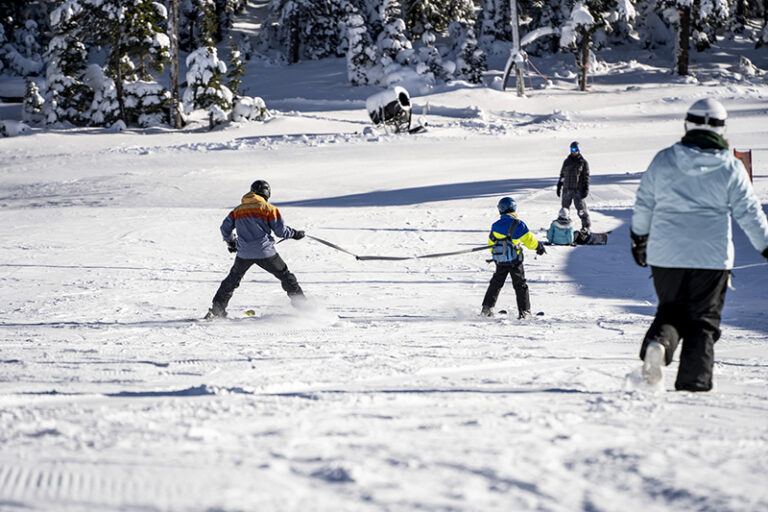In May of 2005, Ed Viesturs, one of America’s leading high altitude mountaineers, completed his extraordinary quest to climb all fourteen of the planet’s 8,000 meter peaks without supplemental oxygen. OTM got in a few words with Ed recently to ask him about his climbing exploits, his new book, and his visit to Spokane on Friday, October 13 at 7 PM at the Met Theatre.
Q: You’ve given presentations to diverse audiences from major corporations, to climbers, to the Seattle Seahawks. What can people expect When they come to
see you?
A: My climbing career, particularly my sixteen-year project to climb the fourteen 8,000 meter peaks. How I did it. Why I did it. What it all meant, and all of the stories that go along with it.
Q: Why should non-climbers consider showing up to hear a mountaineering legend?
A:They don’t have to show up [laughing]. But I do tell great stories and show some pretty nice photos. I try to be as entertaining and educational as possible. A lot of people wonder why people go into the mountains, why they climb mountains. They think we’re dare devils and we take risks, and I would have to say that we go out there and we manage the risk, we try to be as safe as possible. We just love what we do, and we have great adventures doing it. Most of the people I talk to on my speaking tours are non-climbers.
They usually take something away from my presentations, like ideas for reaching a goal or working as a team.
Q: Give us your best pitch for your new book, No Shortcuts to the Top, which recounts your experiences climbing the world’s highest peaks.
A: I wanted people to understand what I did, and hopefully be inspired to do something difficult or challenging and to not say that difficult projects are impossible. You can accomplish great things if you put your mind to it and take it one step at a time.
Q: Now that you’ve achieved your ambitious goal of climbing all of the world’s 8,000-meter peaks without bottled oxygen, do you have any other major outdoor objectives in mind?
A: You know, nothing that will compare to climbing all of those peaks over sixteen years, but I have smaller goals now. I’m still climbing. I still want to do adventures. I am planning to guide on Everest again in spring of ’07 on the north side. I’ve also been invited to run the New York City Marathon in November, so I’m training for that. They’re definitely smaller goals than what I did over the past twenty years or so.
Q: Between going to school at WSU and living in Seattle for several decades, have you done much climbing in Washington?
A: Oh yeah, a lot of my climbing, especially in the early years was done in the Cascades. I’ve guided on Mt. Rainier since 1982. I’ve done a lot of climbing in the Cascades. You know I could be quite content just climbing in the Cascades for the rest of my life. There’s so much to do there. It’s just a great, great place to climb and do adventures, and it’s still equally as challenging.
Q: What are some of your favorite climbs in the Cascades?
A: God, there are so many. Mount Stuart is an awesome mountain to climb. It’s a big granite peak under 10,000 feet that has a lot of great alpine climbing on it. Mount Shuksan is another great one, and even Mount Baker is a pretty cool mountain to be on. That part of northern Washington is so beautiful.
Q: Did you ever get a chance to do any rock climbing around Spokane or bigger climbs up in B.C.?
A: I haven’t done any climbing in eastern Washington or northern Idaho. When I was living there in Pullman, I was so busy with veterinary school that I didn’t have as much free time as I’d wanted. Since then I’ve gone to British Columbia a couple of times, particularly in the Banff area and goofed around there a little bit, but most of the times I was there the weather wasn’t very good, and I didn’t get to do any major climbs. I’d certainly love to go back up there though.
Q: There are a lot of different climbing philosophies and styles. How would you describe your approach to climbing?
A: Getting to the top is optional. Getting down is mandatory. I always try to be very prepared, like training, having the right gear, and doing my homework before I ever get to the mountain. I always figured that when I’m on the mountain that’s when I have to take the test. I’ve always felt that I’ve wanted to be very safe and manage the risks that are there. My main job has always been to come back home. It had to be a round trip, and it had to be fun as well. I’ve always done it for myself and wasn’t trying to prove anything to anybody other than what I can do personally. I was self-motivated and never had pressure from anyone. Even my sponsors never pressured me
to perform.
For tickets to 10/13 show and more info call
Mountain Gear at 325-9000. Read more about
Ed Viestur’s and his plan to offer a guided
ascent of Everest during the spring of 2007
at http://www.edviesturs.com.













